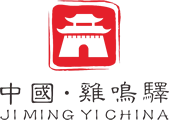03
2025-03
Jiningyi Ancient City: Remnants of a Ming Dynasty post station, a treasure trove of historical culture
Classification:
News
Jiningyi Ancient City, located on the north-western bank of the Yanghe River in Huailai County, Zhangjiakou City, Hebei Province, is the remaining site of a post station built during the Ming Dynasty (1368-1644 AD). Below is an introduction to Jiningyi Ancient City:
1. Historical Evolution
Established in the Ming Dynasty: In the 18th year of Yongle's reign in the Ming Dynasty (1420), Jiningyi was expanded to become the largest station for goods entering the capital city.
Development during the Qing Dynasty: During the reign of Emperor Kangxi of the Qing Dynasty, an official was appointed to manage the post station. In the third year of Qianlong's reign (1738), the four city walls and the east and west gates were repaired, and a stone dam was built around the city.
Modern Protection: In 1982, Jiningyi City was designated as a provincial-level key cultural relic protection unit by the Hebei Provincial People's Government. In 2001, it was approved as a national key cultural relic protection unit by the State Council.
2. Architectural Layout
City Wall Structure: The city is surrounded by brick walls, with a total circumference of 699 zhang (approximately 1165 meters), a height of 3.5 zhang (approximately 6 meters), and more than 17 temples and buildings from the Ming and Qing Dynasties inside the city, most of which are well-preserved.
Internal Division: Five roads crisscross within the city, dividing it into twelve areas of varying sizes. The buildings within the city are arranged in an orderly manner, with the post office area in the city center, stables in the northwest, warehouses in the northeast, and the post road running east-west along the south side of the city.
3. Main Buildings
Cixi's Palace: The Hejia Courtyard was where Empress Dowager Cixi and Emperor Guangxu took refuge when the Eight-Nation Alliance invaded Beijing. To this day, the words "鸿禧接福" (Hongxi Jiefu), meaning "Good Fortune and Blessings," remain carved on the gable wall of the second courtyard, commemorating Cixi's stay.
Taishan Palace: Also known as Taishan Temple, Taishan Palace was built in the 8th year of the Shunzhi Emperor's reign in the Qing Dynasty, and has a history of more than 300 years. The murals inside the hall are still clearly visible, and their layered effect is remarkable.
Postmaster's Office: The postmaster's office was the core of the Qing Dynasty post station and the workplace of the highest administrative officer and his staff. It was an important administrative organ responsible for all matters related to the post station.
In short, Jiningyi Ancient City is not only a historically significant ancient post station, but also a treasure trove of culture, combining historical, artistic, and scientific value. It has witnessed the rise and fall of China's ancient postal system and carries rich historical and cultural information. It is irreplaceable in research on various aspects of ancient Chinese society, culture, and economy.
Related News

咨询热线:0313-6814580
营业时间:夏季 08:30-17:30
冬季 08:30-16:30
地址:河北省张家口市怀来县鸡鸣驿乡鸡鸣驿城
营业时间:夏季 08:30-17:30
冬季 08:30-16:30
地址:河北省张家口市怀来县鸡鸣驿乡鸡鸣驿城

微信公众号

